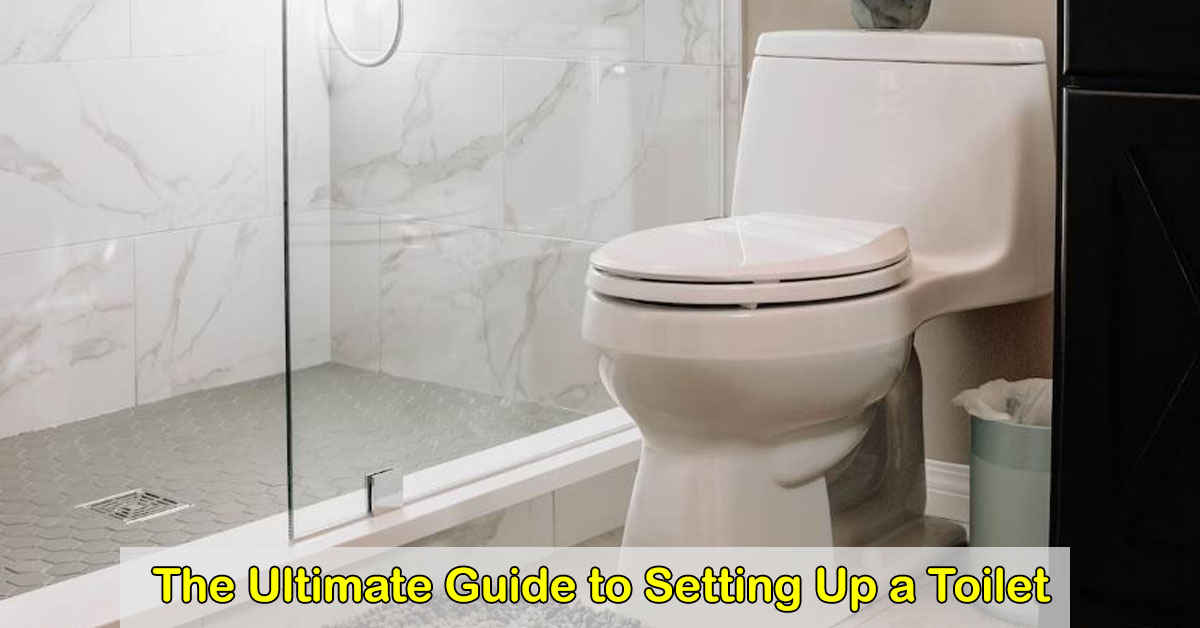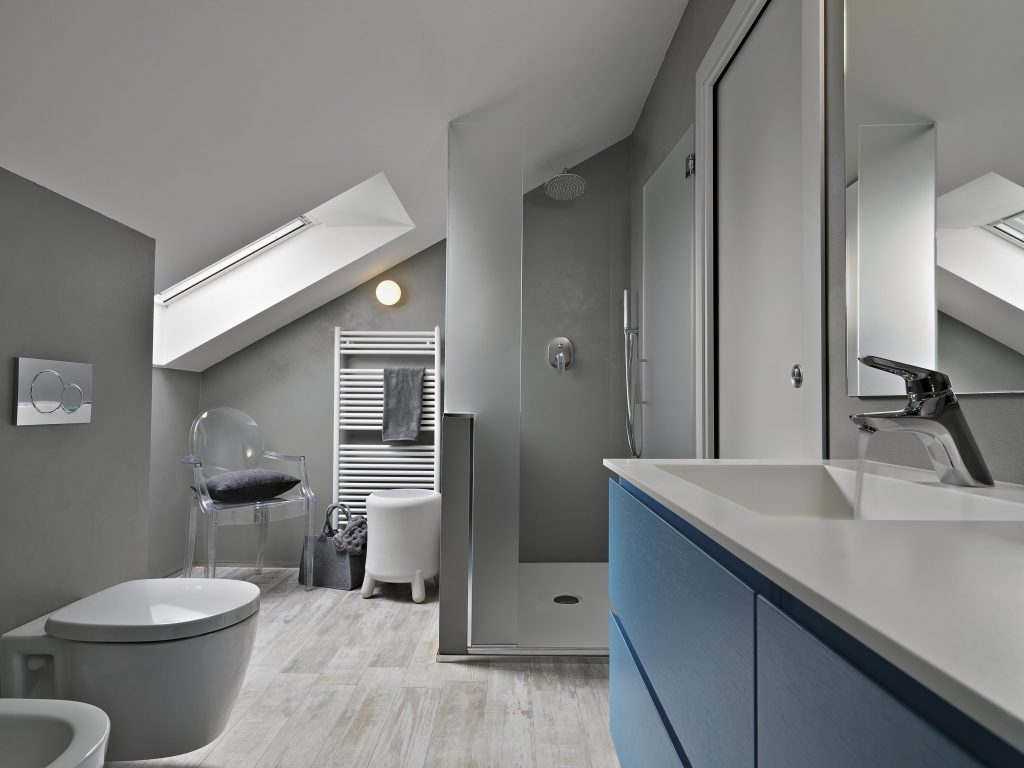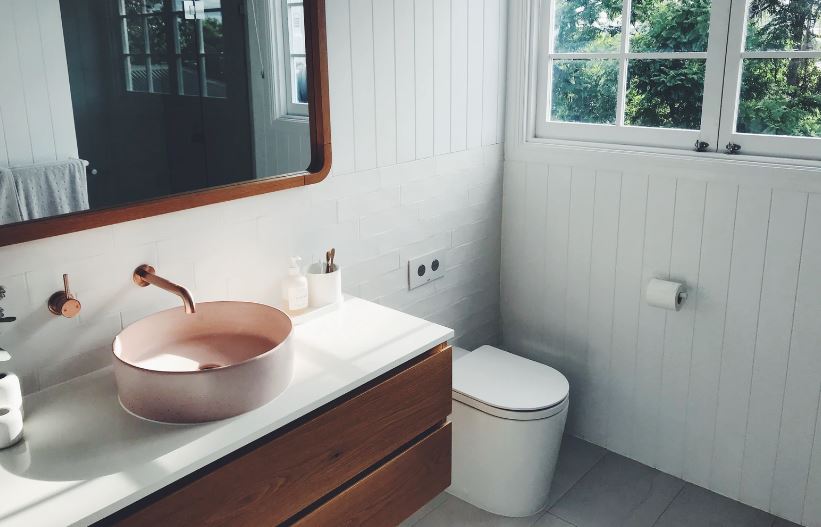If your toilet lifespan has reached its maximum capacity, it’s high time for you to uninstall it. Of course, make sure to buy a replacement in advance. You don’t want to visit public WCs or your neighbours, do you?
Meanwhile, you might want either the assistance of a licensed plumbing company for the purpose or some guides to handle the DIY new toilet setting project on your own.

In both cases, it’s a must to invest in an efficient and reliable enough replacement for your old toilet and to maintain it – this time for sure – in a better way. Here’s our helpful ultimate guide to setting everything up.
Secure bolts to the flange
If the previous unit has not been removed, it is now the appropriate time to perform this task. Position the new toilet, which you intend to install, in close proximity to your working area within the bathroom.
Typically, new units are accompanied by a collection of toilet bolts, commonly known as closet bolts or Johnny bolts. Utilise a wrench to securely fasten these bolts on both sides of the flange, which refers to the toilet’s waste pipe on the floor.
Measure and add the wax ring
Carefully position the fresh wax ring between the toilet bolts using your hands.
Ensure that the ring is centred accurately on the top surface of the flange. If the wax ring possesses a sloped edge, orient it in a manner where the narrower side comes into contact with the flange.
Place the new toilet bowl onto the wax ring
While lowering the toilet bowl, ensure that both toilet bolts pass through the openings on either side of the bowl near its base. With caution, gently tilt the toilet back and forth upon the wax ring until the base aligns flush with the floor.
In cases where the floor is uneven, or the toilet flange is positioned too high above the bathroom floor, shimming becomes necessary to compensate for the additional space. Employ wooden shims, metal washers, or coins to fill the gap until the toilet is levelled.
Once the toilet bowl is securely attached to the wax ring, avoid moving it, as this could compromise the seal and result in potential leaks in the future.
Securing the toilet to the floor
Take the plastic washer provided and position it over the toilet bolts in a manner that allows it to rest flat.
Next, place the metal washer, also provided, over each toilet bolt, ensuring it lies flat on top of the plastic washer. Proceed to thread the nuts in a clockwise direction onto each side of the toilet bolts.
Use a wrench to tighten the nuts until they are snug. If necessary, you can utilise a hacksaw to trim any excess length of the bolts, leaving approximately half an inch above the nut.
Finally, complete the installation by affixing the decorative bolt caps included with the toilet.
Installing the cistern tank
Let’s move to your toilet installation DIY project’s next significant and key step. Please, do the next tasks precisely, but if you feel any difficulties, conduct a professional for expert assistance to avoid any damage in the WC room.
Installing a close-coupled cistern
Before starting, isolate the water supply. Assemble the cistern and place it carefully on the toilet pan, ensuring proper positioning of the central washer. Connect the pan connector to the waste pipe and align the toilet for a snug connection.
Use a spirit level to check cistern and toilet pan alignment. Mark fixing holes on the wall and base. Remove the toilet temporarily, drill holes, and apply sealant around the outlined area. Reinstall the toilet securely.
Screw the cistern to the wall and the toilet base to the floor. Avoid over-tightening. Reconnect the water supply and check for leaks. Attach the seat using bolts and apply silicone sealant around the toilet base. Smooth with a damp cloth.
Installing low-level or high-level cisterns
There are differences between them both, so before you decide which one is right for your bathroom interior, you must first determine your needs.
Here’s a quick guide to this dilemma:
- High-level toilets are more expensive, so the low-cost alternative is the low-level toilets;
- The low-level toilets are more suitable for bathrooms of a smaller size;
- It’s a bit more challenging to install the high-level cistern, but with assistance from experts, you will not have any issues or wasted time in vain;
- They say that high-level toilets provide more efficient flushing;
- High-level toilets, on the other side, are customisable and more aesthetic than the retro low-cistern model;
- Low-level toilets spend less water amount.
Connect the water pipe to the cistern
Don’t forget to turn off the water supply in advance. Then, simply screw some holes to make the connection. On mandatory, tighten all ends of the cistern.
Caulk the base
This is a good idea, but you should precisely and delicately use the knife for the purpose. Make sure not to damage the new toilet.
Add a toilet seat
You are almost there when you reach this step – just one more thing until the mission’s completion. What you have to do here is to follow the correct line and adjust the seat to the outlet. Use practical tools to set the compression ring, as well.
Turn on the water and check for leaks
Now, it’s time to run some tests. See if you have done the job properly. Turn on the water back and perform a couple of flushes. Listen for suspicious strange noises and see if there’s no leak.
Lastly, be prepared to clean up any mess and disinfect where needed.
Secure the water line
There’s nothing so special to be done here. It’s one of the last finishes you should consider when you are done with the new toilet installation.
Just make sure to tighten the bolts and consider adding some extra protective measures where there’s a loosened element.
Conclusion
We don’t know how easy this guide looks to you, but if replacing your old toilet with a new one sounds like rocket science, don’t push yourself too hard. Instead, rely on your local plumbers. Lastly, maybe consider installing an exhausting fan, and your job will be complete!



